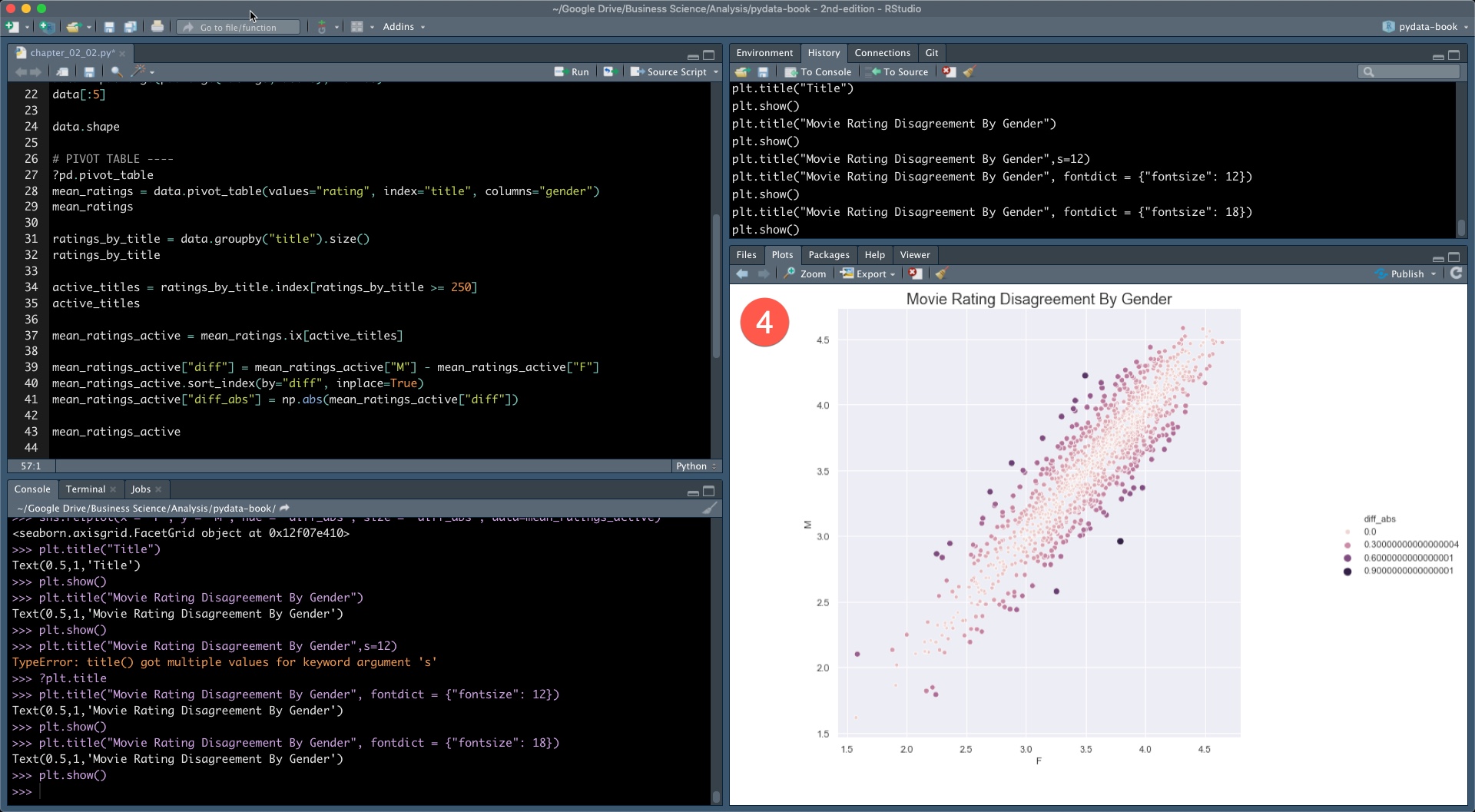
This is a great way to add python functionality to an existing R environment. Possibly the most exciting way of using Python with R is to import Python functions into R. This way, one can use Python and R within the same notebook. Simply launch a new R-Notebook and start to write python code inside a python code chunk. Simply open up a new python script from File -> New File -> Python Script and start to write some python code.Īnother way to use python inside RStudio is via R-Notebooks. One can simply use R-Studio as an IDE for python. Now, that everything is setup, there are multiple ways to use python along with R inside RStudio: Yay! Python and R are now talking to each other 👏 If all of the above steps worked without any errors, you should be able to do something like this in a new R session (console or R-script). py_install(packages = c("pandas", "scikit-learn"))
#R studio python install#
Now that reticulate nows where to find python, we can install some python libraries to work with. If the default virtual environment is not available, or you would like to create a new one, then use conda_create() conda_create(envname = "myenv", conda = "e:/miniconda/_conda.exe") use_condaenv(condaenv = "r-reticulate", conda = "e:/miniconda/_conda.exe") To set it permanently set the RETICULATE_PYTHON environment variable using Sys.setenv(). Note that if you restart R, this will need to be set again. This binds the particular installation of Python to the current R session. If available, then point to it using use_condaenv(). # 1 r-reticulate E:\\miniconda\\envs\\r-reticulate\\python.exe conda_list(conda = "e:/miniconda/_conda.exe") First, let’s check if the r-reticulate virtual environment is available. Now that Miniconda is installed, we need to point reticulate to it. Pointing to the right python installation
#R studio python update#
Install_miniconda(path = "e:/miniconda", update = T) By default, a virtual environment called r-reticulate will also be created as part of the installation process. If you’d rather use a bare bones installation of python, it would be a lot easier to directly install python using the windows binary, go through the installation process, use pip from either the command prompt or Power Shell to install the libraries you need and then point reticulate to that installation of python using use_python(). For windows, if installing python via reticulate, it’s better to install miniconda since reticulate only uses conda to install and manage python libraries.

Next, we will install python via reticulate. The first step, ofcourse, is to install the reticulate package.
#R studio python how to#
In this post, we’ll explore how to set up a python environment and configure the same to work with RStudio in windows.

It also provides functionality to manage multiple python installations. The reticulate package provides a comprehensive set of tools for interoperability between Python and R.Įssentially, reticulate allows R to talk to Python (via a live python session running in the background) and works seamlessly within RStudio. Here’s a quick excerpt from reticulate’s website: If you are like me and have been using R for a long time but would like to explore and add some python capabilities to your workflows, reticulate + R-Studio is a great way to achieve just that.


 0 kommentar(er)
0 kommentar(er)
